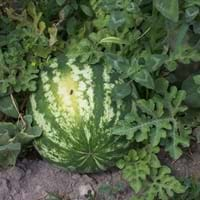Life Span
Annual and Perennial
Annual and Perennial
Type
Bulb or Corm or Tuber
Vegetable
Origin
Latin America and the Caribbean, Central America, Micronesia
Africa
Types
Hannah Yams, Japanese Sweet Potatoes
Not Available
Number of Varieties
Not Available
Habitat
Cold Regions, Tropical regions
subtropical regions, Tropical regions
USDA Hardiness Zone
11-12
10-12
Sunset Zone
21,22
H1, H2, 1a, 1b, 2a, 2b, 3a, 3b, 4, 5, 6, 7, 8, 9, 10, 11, 12, 13, 14, 15, 16, 17, 18, 19, 20, 21, 22, 23, 24
Habit
Vining/Climbing
Prostrate/Trailing
Minimum Width
Not Available
Flower Color
Not Available
Yellow
Flower Color Modifier
Bicolor
Bicolor
Fruit Color
Not Available
Red, Dark Green
Leaf Color in Spring
Green, Purple, Light Green, Chartreuse, Bronze
Green, Dark Green
Leaf Color in Summer
Light Green
Gray Green
Leaf Color in Fall
Several shades of Green
Gray Green
Leaf Color in Winter
Light Green
Not Available
Leaf Shape
Heart-shaped
lobed or unlobed
Plant Season
Spring, Summer, Fall, Winter
Summer, Fall
Sunlight
Full Sun, Partial Sun
Full Sun
Growth Rate
Very Fast
Very Fast
Type of Soil
Clay, Loam, Sand
Loam
The pH of Soil
Acidic, Neutral, Alkaline
Neutral
Soil Drainage
Well drained
Well drained
Bloom Time
Late Fall, Early Winter, Winter
Indeterminate
Tolerances
Drought
Drought
Where to Plant?
Ground, Pot
Ground
How to Plant?
Stem Cutting, Tuber propagation
Seedlings
Plant Maintenance
Medium
Medium
Watering Requirements
Average Water Needs, Needs a lot of water initially
Average Water Needs
In Summer
Lots of watering
Lots of watering
In Spring
Moderate
Moderate
In Winter
Average Water
Average Water
Soil pH
Acidic, Neutral, Alkaline
Neutral
Soil Type
Clay, Loam, Sand
Loam
Soil Drainage Capacity
Well drained
Well drained
Sun Exposure
Full Sun, Partial Sun
Full Sun
Pruning
Remove damaged leaves, Remove dead branches, Remove dead leaves
Remove damaged leaves, Remove dead branches, Remove dead leaves
Fertilizers
All-Purpose Liquid Fertilizer
All-Purpose Liquid Fertilizer
Pests and Diseases
Aphids, Beetles, Leafminers, Red blotch
Grasshoppers, Worms
Plant Tolerance
Drought
Drought
Flower Petal Number
Single
Single
Foliage Texture
Coarse
Medium
Foliage Sheen
Matte
Matte
Attracts
Aphids, Beetles, Mites, white worms
Bees, Birds, Butterflies
Allergy
Abdominal pain, Skin rash, Swelling, Vomiting
Analgesic, Anti-inflammatory, Antimicrobial, Antioxidants
Aesthetic Uses
Not Used For Aesthetic Purpose
Not Available
Beauty Benefits
Not Available
Not Available
Environmental Uses
Air purification
Air purification
Medicinal Uses
Potassium, ß-carotene, Vitamin C
Cardiac, Urinary problems
Part of Plant Used
Leaves, Root, Shoots
Fruits, Leaves, Seeds
Other Uses
Used As Food, Used for its medicinal properties
Oil is used in perfume, soaps, creams, etc., Used to make juice
Used As Indoor Plant
Yes
No
Used As Outdoor Plant
Yes
Yes
Garden Design
Container, Edible, Groundcover, Hanging Basket, Herb / Vegetable, Mixed Border, Vine
Edible, Fruit / Fruit Tree, Herb / Vegetable, Tropical, Vine
Botanical Name
IPOMOEA batatas
CITRULLUS lanatus 'Sugar Baby'
Common Name
Sweet Potato, Sweet Potato Vine
Sugar Baby Watermelon, Watermelon
In Hindi
शकरकंद
Sugar Baby Watermelon
In German
Süßkartoffel
Sugar Baby Watermelon
In French
Patate douce
Sugar Baby Watermelon
In Spanish
Batata
Sugar Baby Watermelon
In Greek
Γλυκοπατάτα
Ζάχαρη μωρό Καρπούζι
In Portuguese
Batata doce
Sugar Baby Watermelon
In Polish
Słodki ziemniak
Arbuz Baby cukru
In Latin
Dulcis SOLANUM TUBEROSUM
Sugar Baby Watermelon
Phylum
Magnoliophyta
Embryophyta
Class
Magnoliopsida
Dicotyledonae
Order
Solanales
Cucurbitales
Family
Convolvulaceae
Cucurbitaceae
Clade
Angiosperms, Asterids, Eudicots
Angiosperms, Eudicots, Rosids
Tribe
Not Available
Benincaseae
Subfamily
Not Available
Cucurbitoideae
Number of Species
Not Available
Importance of Sweet Potato and Sugar Baby Watermelon
Want to have the most appropriate plant for your garden? You might want to know the importance of Sweet Potato and Sugar Baby Watermelon. Basically, these two plants vary in many aspects. Compare Sweet Potato and Sugar Baby Watermelon as they differ in many characteristics such as their life, care, benefits, facts, etc. Every gardener must at least have the slightest clue about the plants he wants to plant in his garden. Compare their benefits, which differ in many ways like facts and uses. The medicinal use of Sweet Potato is Potassium, ß-carotene and Vitamin C whereas of Sugar Baby Watermelon is Cardiac and Urinary problems. Sweet Potato has beauty benefits as follows: Not Available while Sugar Baby Watermelon has beauty benefits as follows: Not Available.
Compare Facts of Sweet Potato vs Sugar Baby Watermelon
How to choose the best garden plant for your garden depending upon its facts? Here garden plant comparison will help you to solve this query. Compare the facts of Sweet Potato vs Sugar Baby Watermelon and know which one to choose. As garden plants have benefits and other uses, allergy is also a major drawback of plants for some people. Allergic reactions of Sweet Potato are Abdominal pain, Skin rash, Swelling and Vomiting whereas of Sugar Baby Watermelon have Analgesic, Anti-inflammatory, Antimicrobial and Antioxidants respectively. Having a fruit bearing plant in your garden can be a plus point of your garden. Sweet Potato has no showy fruits and Sugar Baby Watermelon has showy fruits. Also Sweet Potato is not flowering and Sugar Baby Watermelon is not flowering . You can compare Sweet Potato and Sugar Baby Watermelon facts and facts of other plants too.





